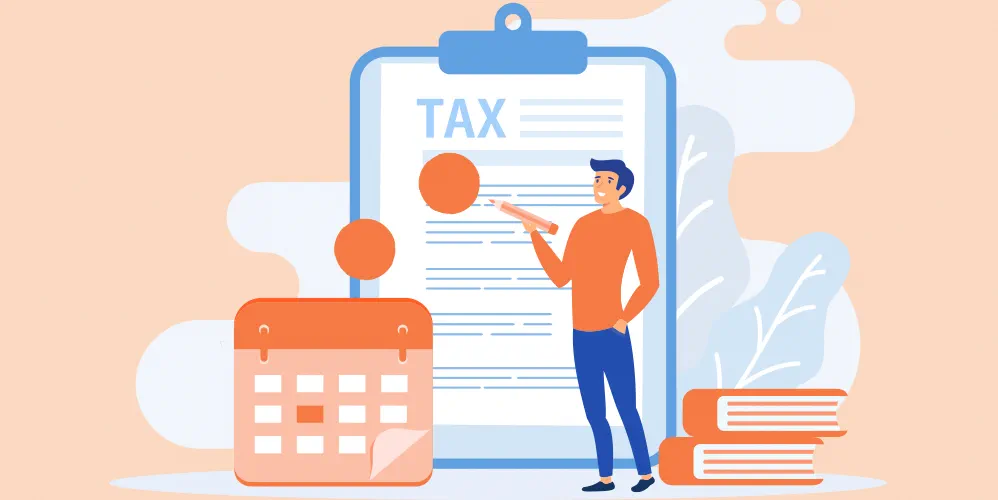
Benefits of Life Insurance
19 दिसम्बर 2019

Life insurance is a must in today’s world. Modern living is an expensive business, and people have to bear the burden of huge costs like children’s education, EMIs on home loans, healthcare and so on. So it is important for every earning member to have a life insurance policy to protect the financial interests of his or her family. There are many benefits of life insurance policy, which we will look at in this article.
Features of life insurance
Let’s look at the features and advantages of life insurance policy:
- Protection: The first and foremost objective of a life insurance policy is to ensure the financial protection of your family, and this could include dependent parents, spouse, children or siblings. The demise of the sole earning member could put dependents to considerable hardship, especially since cost of living is very high these days. Life insurance gives you the assurance that your family members will be looked after in the event of your untimely demise.
- Contract: Life insurance is basically a contract between the insurers and the individual who takes out the policy. You pay premiums every quarterly/half yearly/yearly to the company. In return, the insurer will give a lump sum to your family in the event of your demise.
- Premiums: Premiums are paid quarterly / half yearly which you need to pay to get life insurance. The amount will vary from person to person, depending on the tenure of the policy, age of the policyholder, health and type of policy.
- Affordable: Life insurance is an affordable way of ensuring the financial well-being of your family. Premiums on policies, particularly term insurance, are quite low and worth your while for the protection they offer.
- Easy to buy: Buying insurance from company is quite easy. Insurance companies have specified persons, who will visit you at your home or office and help you with options and paperwork. You can also do it online at your convenience.
- Tax benefits: Another one of the benefits of life insurance policy is that you can deduct the premiums you have paid from your taxable income. Under Section 80C of the Income Tax Act.
- Savings: There are some life insurance products that combine savings and insurance. This can be a good way of saving for the future and protecting your family at the same time
Types of life insurance
Now that we’ve seen the essential features of life insurance policy, let’s look at the types:
Term insurance
This is the most basic, and most popular, of life insurance policies. You purchase a policy for a certain period for which you pay premiums. For example, if a policyholder wants a policy till the age of 60, he or she can take one. And if the policyholder passes away before 60, the nominee is paid the death benefits.
Unit-linked Insurance Plan
A Unit-Linked Insurance Plan (ULIP) combines investment with insurance. At the end of the policy, the policyholder gets a certain sum. This is unlike a term plan where the payout is made only on the death of the policyholder. Part of the premium is paid for life insurance, while the remainder is invested in either stocks or bonds, depending on the investor’s risk appetite and investment goals. The investments yield returns which are then given to the policyholder after the end of the policy period
Popular Articles
What is Tenure in a Personal Loan and How to Choose the Loan Tenure Smartly?
Related Articles










-
डिस्क्लेमर
इस लेख/इन्फोग्राफिक/चित्र/वीडियो की सामग्री का उद्देश्य केवल सूचना से है और जरूरी नहीं कि यह बैंक ऑफ बड़ौदा के विचारों को प्रतिबिंबित करे। सामग्री प्रकृति में सामान्य हैं और यह केवल सूचना मात्र है। यह आपकी विशेष परिस्थितियों में विशिष्ट सलाह का विकल्प नहीं होगा । बैंक ऑफ बड़ौदा और/या इसके सहयोगी और इसकी सहायक कंपनियां सटीकता के संबंध में कोई प्रतिनिधित्व नहीं करती हैं; यहां निहित या अन्यथा प्रदान की गई किसी भी जानकारी की पूर्णता या विश्वसनीयता और इसके द्वारा उसी के संबंध में किसी भी दायित्व को अस्वीकार करें। जानकारी अद्यतन, पूर्णता, संशोधन, सत्यापन और संशोधन के अधीन है और यह भौतिक रूप से बदल सकती है। इसकी सूचना किसी भी क्षेत्राधिकार में किसी भी व्यक्ति द्वारा वितरण या उपयोग के लिए अभिप्रेत नहीं है, जहां ऐसा वितरण या उपयोग कानून या विनियमन के विपरीत होगा या बैंक ऑफ बड़ौदा या उसके सहयोगियों को किसी भी लाइसेंसिंग या पंजीकरण आवश्यकताओं के अधीन करेगा । उल्लिखित सामग्री और सूचना के आधार पर किसी भी वित्तीय निर्णय लेने के लिए पाठक द्वारा किए गए किसी भी प्रत्यक्ष/अप्रत्यक्ष नुकसान या देयता के लिए बैंक ऑफ बड़ौदा जिम्मेदार नहीं होगा । कोई भी वित्तीय निर्णय लेने से पहले अपने वित्तीय सलाहकार से सलाह जरूर लें।
वरिष्ठ नागरिक बचत योजना के बारे में आप सभी को पता होना चाहिए
बुढ़ापा आने पर अक्सर हमारे जीवन में अनिश्चितता आती है। वरिष्ठ नागरिकों से लोग अक्सर उनके स्वास्थ्य व अन्य बातों के साथ साथ उनकी वित्तीय स्थिति पर चर्चा करते हैं।भारत सरकार ने वरिष्ठ नागरिकों के लिए वित्तीय सुरक्षा के महत्व को ध्यान में रखते हुए वरिष्ठ नागरिक बचत योजना ( एस सी एस एसज़ज़ )की शुरुआत की है।
PPF Tax Benefits & Features you must Know About
A popular investment and tax saving instrument for Indians since it was first introduced in 1968 by the Central Government, the Public Provident Fund is a great tool to boost small savings by every individual across India. One of the biggest reasons thousands open opt for PPF is the PPF tax benefits.
The following are the features of a PPF for your comprehensive understanding:
Tenure
The PPF is a long-term investment with a minimum tenure of 15 years. PPF holder can extend the tenure by a period of 5 years every time.
Rate of interest
The rate of interest is determined by the Ministry of Finance every quarter. The compound interest is paid out at the end of the financial year i.e. on March 31. The interest is determined based on the balance between the closing of the 5th day and last day of each month.
Limits on investment
PPF is appealing to every section of society with different income levels. The minimum deposit every financial year is Rs.500 while the maximum amount is Rs.1, 50, 000. You can deposit the amount in lumpsum or in instalments in a financial year.
Opening Balance
You need to have at least Rs.500 to begin with when you open the account. Maximum amount upto Rs.1,50,000 can be invested every year and is eligible for exemption under section 80C of IT Act.
Mode of deposit
There is limited restriction on how you can deposit money into your PPF account. You can transfer funds online, deposit cash, cheque or pay through a demand draft.
Frequency of deposit
The account holder needs to make a deposit at least once a year for 15 years.
Nomination
The account holder may nominate one or more people (maximum 4) who will receive the amount in the PPF in case of the account holder’s death. The amount that each nominee will receive can also be determined by the account holder during nomination.
Joint account
One individual can hold only one PPF account at any given point of time. No joint account is allowed.
Risk-free
The PPF is backed by the government and offers complete protection of investment regardless of market conditions.
Loan
You are eligible to take loan against your PPF provided it is between its 3rd-6th Financial year. The loan amount is capped at 25% of the balance in the 2nd year preceding the year in which you applied for the loan.
Eligibility
You need to be an Indian citizen residing in India. Members of HUF cannot open a PPF account. One eligible individual can hold only one PPF account. However, an individual can hold another PPF account on behalf of a minor.
Can one withdraw from their PPF before maturity?
A PPF account can be closed only when it completes 15 years. However, if the account holder needs to withdraw money from their PPF account due to a financial emergency, they can do so only from the 7th year onwards. These withdrawals can be made only once in a fiscal year.
What are the tax benefits offered with a Public Provident Fund? Is PPF maturity taxable?
A PPF is categorised as EEE which stands for Exempt-Exempt-Exempt. This means that the principal amount can be deducted under Section 80C of the Income Tax Act, 1961.
Furthermore, there is no PPF maturity tax i.e. the account holder does not have to pay tax on the interest accumulated on maturity of the PPF or the total amount post maturity.
A simple enough tax saving instrument with good rate of interest, you can start a PPF for yourself or your child with Bank of Baroda.

